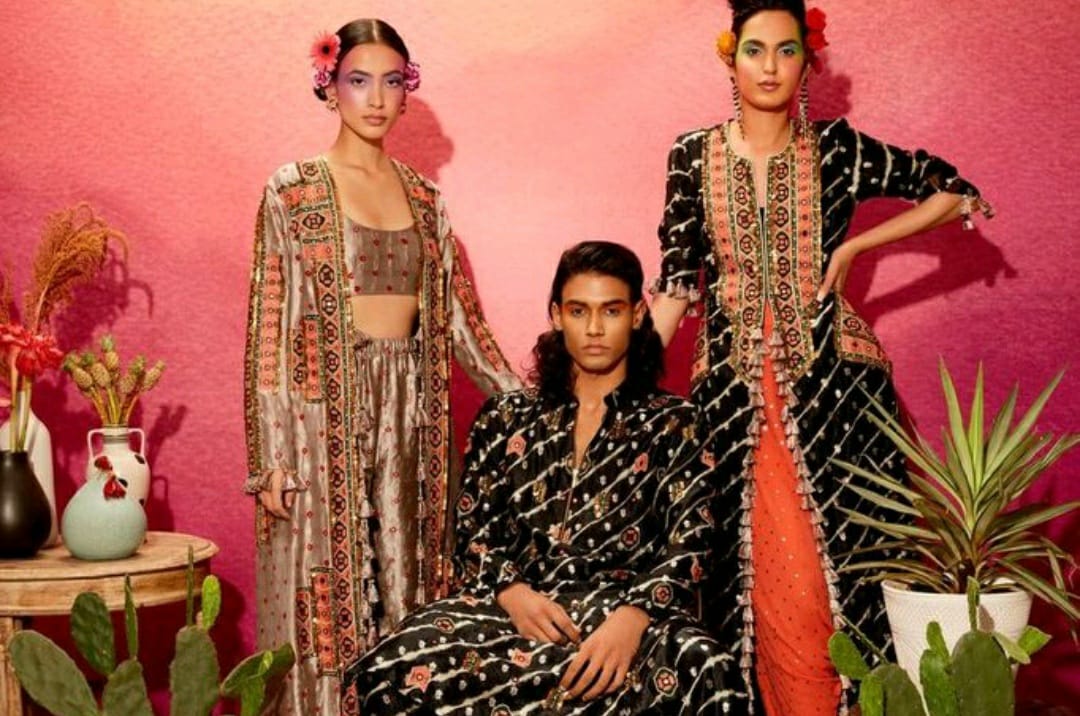How are traditional Banarasi silk fabrics being re-imagined for the modern wardrobe?
The one essential piece of clothing in every Indian bride’s trousseau is a Banarasi saree. Known for the silk that is intricately woven in brocade or zari, the sheer richness of the saree makes it an outfit for ‘special occasions’. From Indian politicians to Bollywood actresses, this saree has had an ardent fan following over the years.
A Banarasi saree is intricately woven and requires expert skills, taking anything from a fortnight to six months to make one, depending on how elaborate its design and pattern is. Largely inspired by Persian designs (thanks to the Mughals), the typical Banarasi saree, more often than not, features floral and foliate motifs created using gold and silver threads.
While traditional Banarasi sarees still hold a special place in an Indian woman’s wardrobe, in order to appeal to a younger generation of consumers, many labels and designers are looking at Banarasi silks through the lens of a modern era.
Payal Singhal whose latest Spring/Summer collection combines bandhani and Banarasi silks in the form of kaftans and jackets. “In today’s time and age, it’s imperative that traditional crafts like handwoven Banarasi silks are reinvented to appeal to a younger demographic. In this collection, we have taken the values and ideas from traditions passed down through generations and reimagined them in a way that is relevant,” says Singhal, who used bandhani, leheriya and Banarasi silks (made across two cities, Jaipur and Banaras) together for the first time. “With increasing diversification in the Banarasi fabric now, it is easier to adapt it in more versatile silhouettes,” she adds.
Despite the popularity of these designs on social media, there remains a very real challenge faced by the workers in the silk textile sector in the country, including migration and industrialisation.
A Banarasi saree is intricately woven and requires expert skills, taking anything from a fortnight to six months to make one, depending on how elaborate its design and pattern is. Largely inspired by Persian designs (thanks to the Mughals), the typical Banarasi saree, more often than not, features floral and foliate motifs created using gold and silver threads.
While traditional Banarasi sarees still hold a special place in an Indian woman’s wardrobe, in order to appeal to a younger generation of consumers, many labels and designers are looking at Banarasi silks through the lens of a modern era.
Payal Singhal whose latest Spring/Summer collection combines bandhani and Banarasi silks in the form of kaftans and jackets. “In today’s time and age, it’s imperative that traditional crafts like handwoven Banarasi silks are reinvented to appeal to a younger demographic. In this collection, we have taken the values and ideas from traditions passed down through generations and reimagined them in a way that is relevant,” says Singhal, who used bandhani, leheriya and Banarasi silks (made across two cities, Jaipur and Banaras) together for the first time. “With increasing diversification in the Banarasi fabric now, it is easier to adapt it in more versatile silhouettes,” she adds.
Despite the popularity of these designs on social media, there remains a very real challenge faced by the workers in the silk textile sector in the country, including migration and industrialisation.
